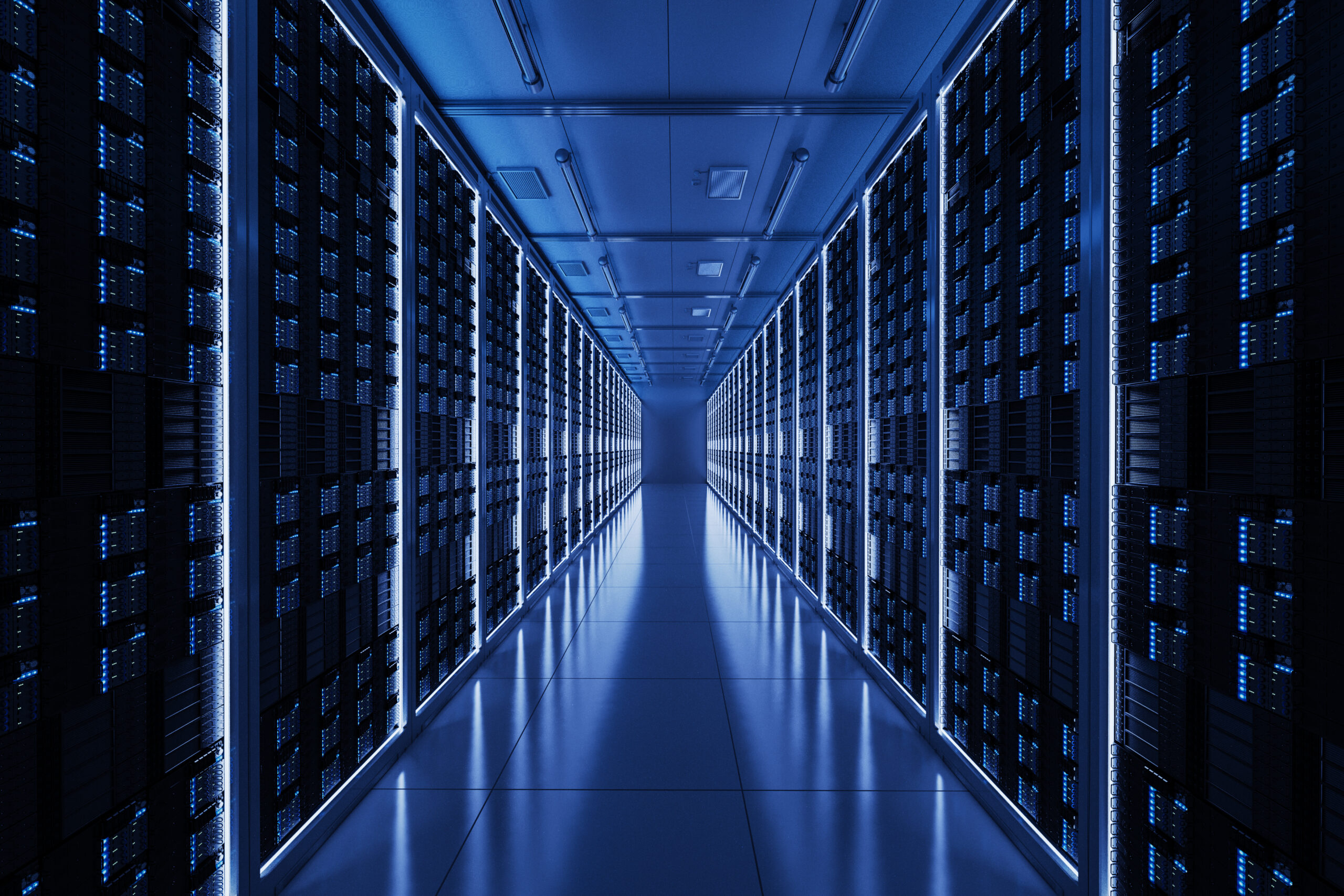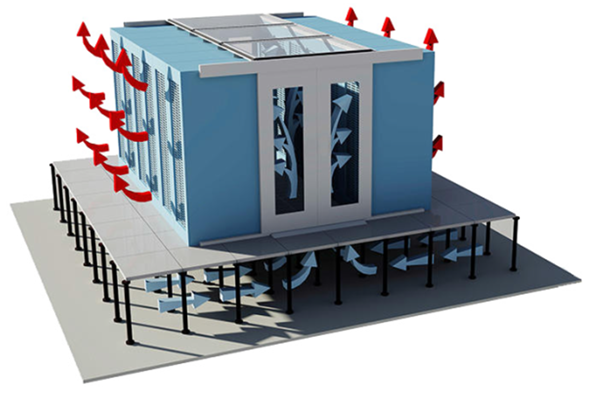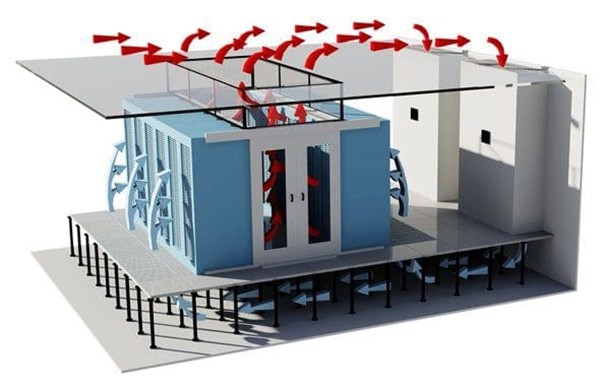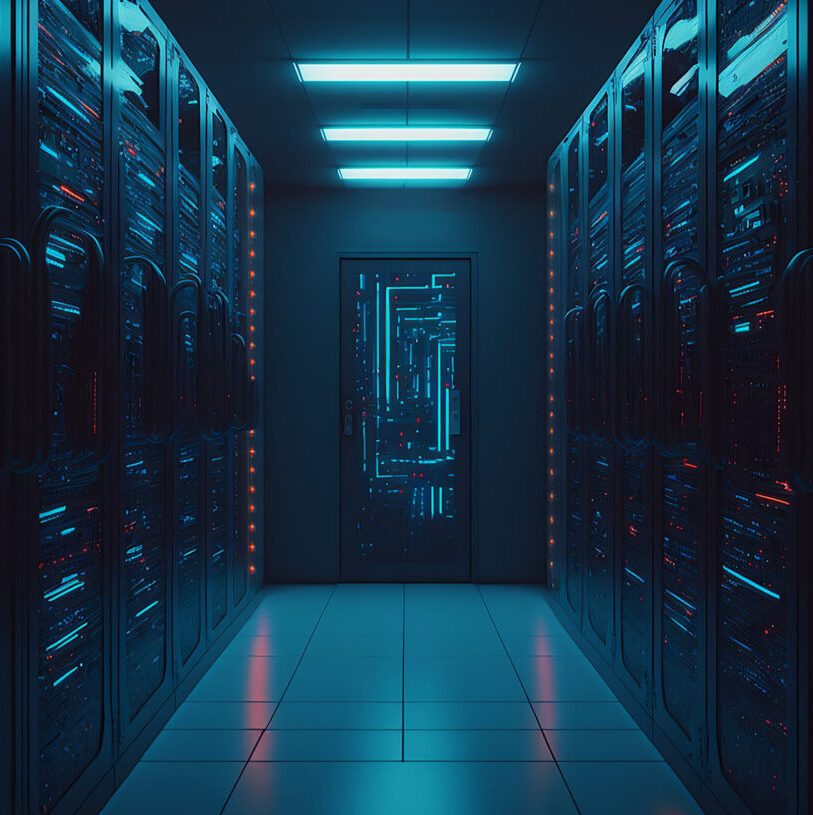
Technical challenges and modern solutions in data center cooling
Why is cooling a base of data center reliability?
In the era of digitalization, artificial intelligence, cloud computing, and IoT, a reliable data center is the base of any modern organization. Efficient cooling ensures the stability of IT systems, prevents failures and extends the life of equipment.
As a result of increasing demands on processing speed and data storage capacity, the global data center market is growing at an annual rate of more than 10%. This growth also brings a significant increase in heat dissipation, which increases the need for advanced and energy-efficient cooling systems.
What makes data center cooling complex?
Data center cooling is far more complex than just lowering the temperature. It is a precisely controlled process that must keep up with the extreme requirements of reliability, energy efficiency and technological evolution.
Maintaining a stable operating temperature and relative humidity, with continuous cooling 24/7 – all year round, is the basis for preventing failures and ensuring continuous system operation.
Such continuous operation is often described by the term “five 9s”, which stands for an annual server uptime of 99.999%. This means that a maximum of about 5 minutes of break per year is allowed, and that is why it is essential to provide reliable and redundant cooling that can prevent downtime.
Classic cooling methods, such as air conditioning units, are increasingly insufficient, especially with high-density data centers, such as GPU clusters for artificial intelligence or high-performance computing (HPC). In response, new, technologically advanced solutions are being introduced, among which the following stand out:
- Liquid cooling, due to a significantly higher heat transfer capacity compared to air
- Direct air–cooling
- Free cooling that uses outdoor air whenever climatic conditions allow
- Modular and underwater data centers, as future concepts for extreme efficiency and flexibility
Energy efficiency
PUE (Power Usage Effectiveness) is a measure of energy efficiency that represents the ratio of the total energy consumption of the data center and the energy consumption of the IT equipment itself. In this way, it is clearly shown how much of the total energy is used directly for the operation of the IT system, and how much is spent on cooling, power supply and other auxiliary infrastructure.
The ideal value is 1.0. However, the industry average is often 1.4–1.8, as cooling systems account for up to 38% of total energy consumption. That is why more and more investments are being made in automated energy management systems, which use sensors and artificial intelligence to adjust the operation of refrigeration units in real time, reducing consumption without compromising performance.

Models and optimizations of data center cooling
Modern cooling systems are designed to ensure precise control of temperature, humidity and airflow with maximum energy efficiency. Below we present the most common strategies and technologies used in the design and optimization of refrigeration systems:
Air Control in Server Rooms
Air cooling, via CRAC unit (Computer Room Air Conditioning), allows precise control of temperature and humidity.
Inside the CRAC unit are heat exchangers that take warm air from the data center and allow heat to be efficiently transferred to refrigerants such as DX refrigerant, water, glycol or air.
The most common design involves the distribution of cold air through the raised floor and grilles in front of the server racks, where the air enters the server equipment. As it passes through the equipment, the air heats up and exits at the back of the racks, and then returns to the CRAC unit for re-cooling or is discharged into the environment.
In order to increase energy efficiency and prevent hot and cold air mixing, the concept of “hot aisle/cold aisle” is often applied – the physical separation of hot and cold zones within the server room. The method of such separation is shown in the illustrations below
- Cold aisles: the fronts of the racks are facing each other, and cold air is distributed between them.

- Hot aisles: The backs of the racks face each other, where warm air is collected and then sucked back into the cooling system.

Localized cooling refers to systems in which the refrigeration unit is located closeto IT equipment to supply cold air directly to it, and differs according to where the unit is located:
- In-row cooling: Refrigeration units are placed between the server cabinets. This shortens the path of cold air to the equipment and reduces the possibility of mixing with warm air.
- In-rack cooling: The cooling units are located inside the cabinets themselves, allowing for precise temperature control at the individual server level.
Selection and optimization of the cooling source
There are three basic cooling media used in data center cooling systems:
DX refrigerant:
Such systems are among the first solutions used for cooling IT equipment, thanks to their compactness, flexibility and easy installation. They are suitable for small and medium-sized server rooms because they take up little space and do not require complex infrastructure. However, these systems have limitations – poor energy efficiency at higher capacities and the inability to use free cooling, which makes them less suitable for large data centers.
Air:
The air can be used as a cooling source using an “economizer” system, which uses cold outside air to directly cool the space without additional treatment. This method does not use water, ensuring greater safety for electronic equipment. However, due to strictly defined temperature and humidity limits in server rooms, the use of this method is limited by weather conditions and the climatic zone.
In warmer regions, adiabatic cooling is sometimes applied, whereby the warm return air is cooled by spraying water, which lowers the temperature and humidifies the air by evaporation. These systems take up far more space than systems with DX refrigerant or water, which further reduces their possibility of application.
Water:
Water as a cooling source is particularly suitable for smaller data centers where a cooling systems with water already exists, as well as for very large centers where investment in a water cooling system is justified by added efficiency. The advantage of water cooling is high energy efficiency and stable operation regardless of climatic conditions.
For additional energy savings, the “free cooling“ method is often used, which in colder climates uses cold outside air to cool the water without additional mechanical cooling. In this way, costs and environmental impact are reduced. The air for free cooling can be additionally pre-cooled by adiabatic cooling.
It is also possible to apply “heat recovery“ – a system that uses heat from heated water to heat other spaces that need thermal energy, which further increases the energy efficiency of the entire system.
The main limitations of this system are greater technical complexity and maintenance.
How do next-generation refrigeration technologies combine technical excellence and sustainability?
Due to the limitations of cooling with a CRAC unit, cooling systems with water or other coolants are increasingly used, which have a significantly higher heat transfer capacity – up to 3000 times more efficient than air. Among such solutions, the following ones are important:
Rear-door heat exchangers
One of the new generation applications of refrigeration technology is the integration of heat exchangers on the back doors of server cabinets. This method allows direct cooling at the heat source, which reduces the load on the central cooling system and increases the efficiency of work.
Direct-to-Chip Liquid Cooling
With direct-to-chip cooling, coolant is supplied directly to the CPU, GPU and other key components via a piping system. This enables precise and localized temperature control, which is particularly useful at high thermal loads.
Immersion Cooling
The most advanced cooling technology involves immersing IT equipment in a dielectric fluid. This liquid does not conduct electricity, but effectively dissipates heat from the entire surface of the hardware components.
The advantages of these solutions include high energy efficiency, precise temperature control and the ability to cool components with a high thermal load. However, the disadvantages of these systems are a higher initial investment, more complex installation and the need for regular technical maintenance.
Optimize cooling! Reduce costs! Preserve the system!
In the context of increased digital transformation, the growing need for data processing and the increasing complexity of IT infrastructure, cooling data center is becoming one of the most important technical and energy challenge. Traditional cooling systems, although still present, are increasingly giving importance to advanced technologies that offer greater efficiency, better control and less environmental impact.
With Alfa Therm, you choose technical excellence, energy efficiency and solutions that last. Choose a partner for smart and reliable data center cooling.
Are you planning to build or optimize a data center? Visit our contact form for consulting.



